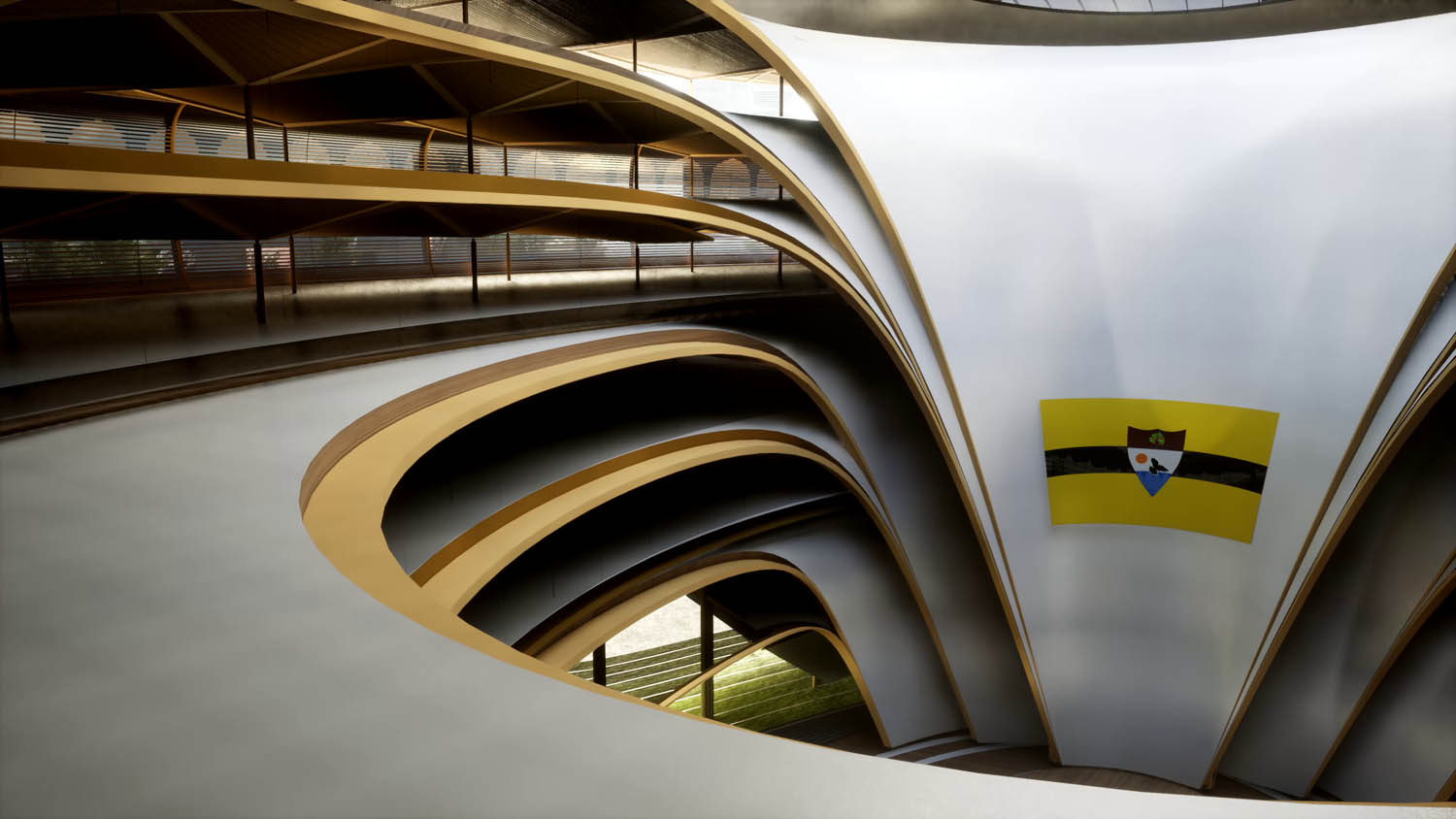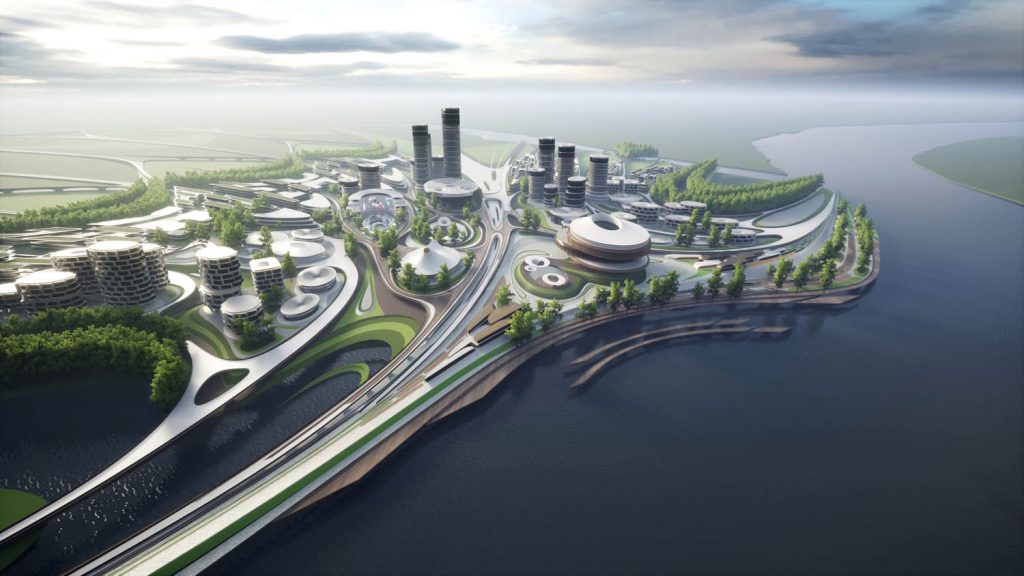Patrik Schumacher, head of Zaha Hadid Architects, on the metaverse as an opportunity for architects and the integration of real and virtual communication spaces
Zaha Hadid Architects – which was founded by Zaha Hadid, the 2004 Pritzker Prize Winner and one of the most influential female architects of our time – is internationally known for its dynamic and innovative designs. Each of the practice’s projects builds on over thirty years of revolutionary experimentation and research in the interrelated fields of urbanism, architecture and design.
Today the practice is headed by Patrik Schumacher, who since 1988 has been instrumental in developing Zaha Hadid Architects to become a 500 strong global architecture and design brand.
Schumacher studied philosophy, mathematics and architecture in Bonn, Stuttgart and London and received his PhD at the Institute for Cultural Science in Klagenfurt. In 1996, he founded the Design Research Laboratory at the AA in London where he continues to teach. Since 2007 he has been promoting parametricism as an epochal style for the 21st century. His current research interest is focused on the metaverse and the integration of real and virtual communication spaces.
Sara Kolata, an architect and business strategist on a mission to improve the financial wellbeing of architects, sat down with Patrik to speak about the metaverse as an opportunity for architects.

Sara Kolata: Patrik, can you tell us more about the ZHA approach to the metaverse?
Patrik Schumacher: The metaverse is being built as we speak, rapidly. But who is designing it? Who should design it? My thesis is that the design of the metaverse falls within the remit of the discipline of architecture and the wider design disciplines, not video game artists.
According to my theory of architecture and design, video game developers / artists are not designers. They do not belong to the discipline of design, but to the entertainment industry. The metaverse is where much of the architectural action and innovation will be happening in the coming period. I also believe that the metaverse offers a potent opportunity for parametricism – the only natively digital, computational and truly contemporary architectural style – to make strides toward the hegemony it long aspires to within the discipline.
Kolata: How do you see the metaverse opportunities for architects manifest in positive impacts on society and the future of the built environment?
Schumacher: The metaverse I want to contribute to supports and becomes part of productive societal life and an integral part of social production and societal reproduction. This serious type of metaverse does not offer an alternate reality or second life or any escape from social reality or societal life, but instead enhances society and enables fulfilling, productive lives.

Entertainment is not altogether excluded, but it is only a small part of this. Fiction plays a productive role in societal self-reflection and education, but the world of video games, and many of the virtual worlds and metaverses tied up with the world of video games, are all too often ideologically regressive fantasy worlds.
To be sure, the video game industry has developed all the amazing digital technologies that are now ready to be emancipated and transferred to greater tasks. The computer game market is big, but it is only a small niche compared to the generalised concept of virtual interaction spaces that will now invite and frame all domains of human interaction: knowledge exchange, professional collaboration, cultural communication, art, education, political engagement, etc.
The metaverse I want to contribute to supports and becomes part of productive societal life and an integral part of social production and societal reproduction Patrik Schumacher, Zaha Hadid Architects
We will never get away from real physical architecture altogether, as long as we have bodies. Also, there will probably never be a total virtual substitution even of all physically embodied social communications. However, no domain will remain untouched by these new opportunities, and no physical space will remain without virtual competition and potential substitution.
Kolata: What, in your opinion, is the role of the architect in the metaverse?
Schumacher: The life process of society is a communication process that is ordered via a rich typology of communicative situations. It is the designed environment, both physical and digital, that distributes, frames, stabilises and coordinates these distinct situations and unfolds them within a designed order that allows us to self-sort as participants of various specific social interactions.
The designed spaces – real or virtual – are themselves communications: they are communications that define, premise and prime the communicative interactions that are expected to take place within the respectively framed territory.
All design is about framing social interactions. This is also true for virtual interactions. Any design project in this space involves the three parts of the architect’s project I have distinguished in my theory of architecture: the organisational project, the phenomenological project and the semiological project.

In the context of the metaverse, I must add the dramaturgical project, representing interaction design. The semiological project is crucial: While all urban spaces are also information-rich navigation and interaction spaces, this information-rich communicative charge and capacity is the very essence of all virtual spaces and the metaverse.
To design architectural projects, real or virtual, implies the development of a spatio-visual language, with a muchenhanced communicative capacity, to create navigable and legible information-rich environments for multiple layered societal interactions, purposes and audiences.
The metaverse promises co-location synergies, just like cities, and an immersive 3D layered visual field makes many more interaction offerings simultaneously navigable, recognisable and accessible than 2D pages with scroll down menus. How to maintain perceptual tractability and legibility in the face of richness and complexity is the designer’s task and core competency with respect to both city and metaverse.
Kolata: Do you see any alternative opportunities for architects, which are worth exploring?
Schumacher: There is another reason why architecture will take the lead in metaverse design: All organisations – firms, cultural institutions, charities, etc. – will host virtual spaces in the metaverse. Most of them will retain their urban premises too. It makes sense that both physical and virtual premises are congenial extensions of each other, and are designed together.
I further predict that our physical urban and architectural environments will transform and become interfaces to these virtual worlds. This means users can enter the virtual worlds not only individually from their homes via headsets or laptops but together with others via large panoramic screens and other spatial interfaces.
We’ll experience the metaverse from shared physical social spaces, from within our work spaces and public urban spaces. So, I predict a mixed reality and a cyber-urban fusion. If this is true, it is again important to design real and virtual spaces together, as a continuum.
Architecture and the design disciplines must gear up to take on this task and a massive, soon snowballing market.
Patrik Schumacher will speak at the Disrupt Business of Architecture conference planned to take place on 1-5 May 2022.
He will give a presentation about architects’ opportunities in the metaverse and disclose advice and step-by-step strategies architect entrepreneurs can implement today to better strategise for success as designers for the metaverse.







